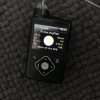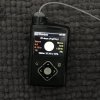Not had many bleeders. But the one or two I’ve had either worked, or didn’t. So I guess, frustratingly, ‘it depends’
🙄
If a sensor is misbehaving (either refusing to start, or giving results not accurate enough to be useful) I call Medtronic and they send a replacement. Of course this only counts within the official life of the sensor, so I wouldn’t call after 6 days for Enlites as that’s not fair. Medtronic have to be pretty hot on this because sensor values can directly affect insulin supply. One thing you get which you don’t with Libre is access to the ISIG value - the strength of the raw sensor signal. The pump uses this along with the BG calibrations to give you the sensor glucose value. And every time you recalibrate it rechecks with the ISIG for the new multiplication. There are two things about this... one is that calibration is best done when sensor glucose is fairly steady (so that interstitial lag doesn’t mangle the sums) and the other is that you can crudely check the sensor ‘health’. I’d generally expect an ISIG in the 20s and higher to give excellent accuracy. By the time it drops near 10 or below, the sensor is on its way out.
With recharging the transmitter (20-30 mins) and sensor warm up (1-3 hours) I can often be 3 hours without sensor information, which is a bit frustrating. Newer sensors may warm up faster I think?
You choose. You can have suspends just happen silently, or you can set to be notified when you ‘suspend before low’. You can also set different alerts at different times of day (by the hour if you wish). You can also set how soon after an alert you want to be reminded if the condition still exists. I have 30 mins for lows and 1.5 hours for highs because I don’t want to be nagged while Novo-notvery-Rapid gradually gets going. Each alert needs to be acknowledged by 3 clicks. Turn on. Scroll down the screeds of text on the screen. Accept. If you miss an alert in a noisy environment it will gradually ramp up the intensity, including pump vibration. And eventually sirening.
You can silence all alarms (eg in a meeting / at theatre / in choir performance) but you will still be alerted if you actually drop hypo.
I’ve run a couple of sensors over the last 4 weeks. These are not unusual stats for me when I’ve been able to run sensors concurrently. When I’m only using sensors ever other month I have to spend more time firefighting in the first week and generally have more lows and more like 70% in range.
With Libre I’d expect more like 2-8% of time below 4.
View attachment 11544
View attachment 11545
Sorry that the pie chart is a bit bleached out. But you should be able to read the numbers.
No. Medtronic have their own system called Carelink. It’s just about OK, and slightly better now than when it was absolutely useless.
Glooko/Diasend were promising Medtronic integration for a while, but it’s not happened yet AFAIK.


